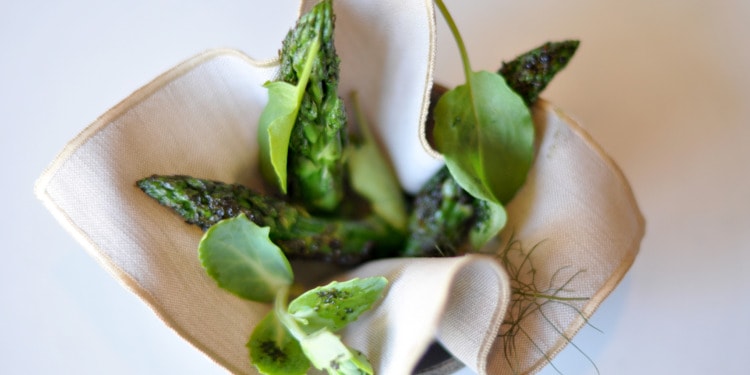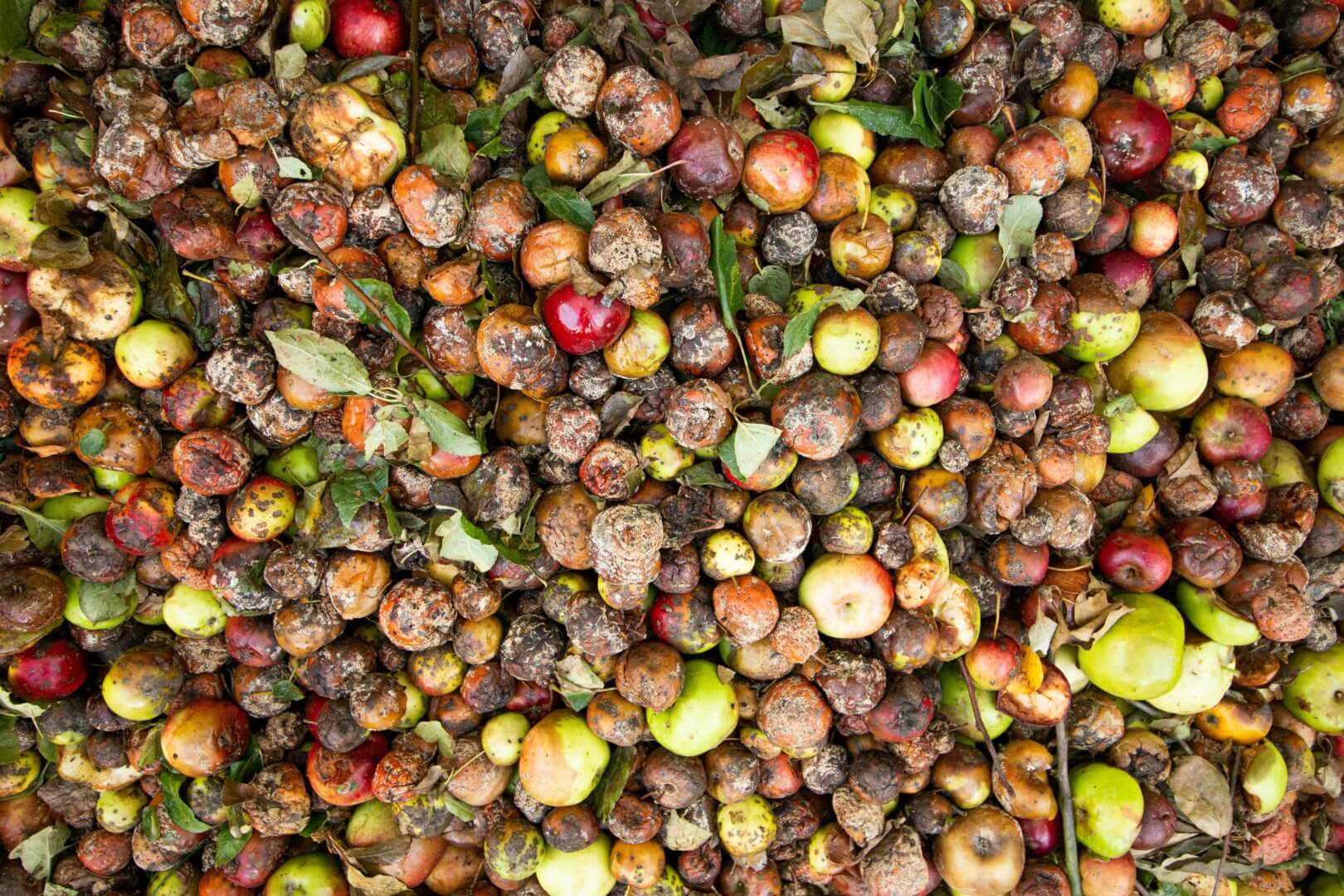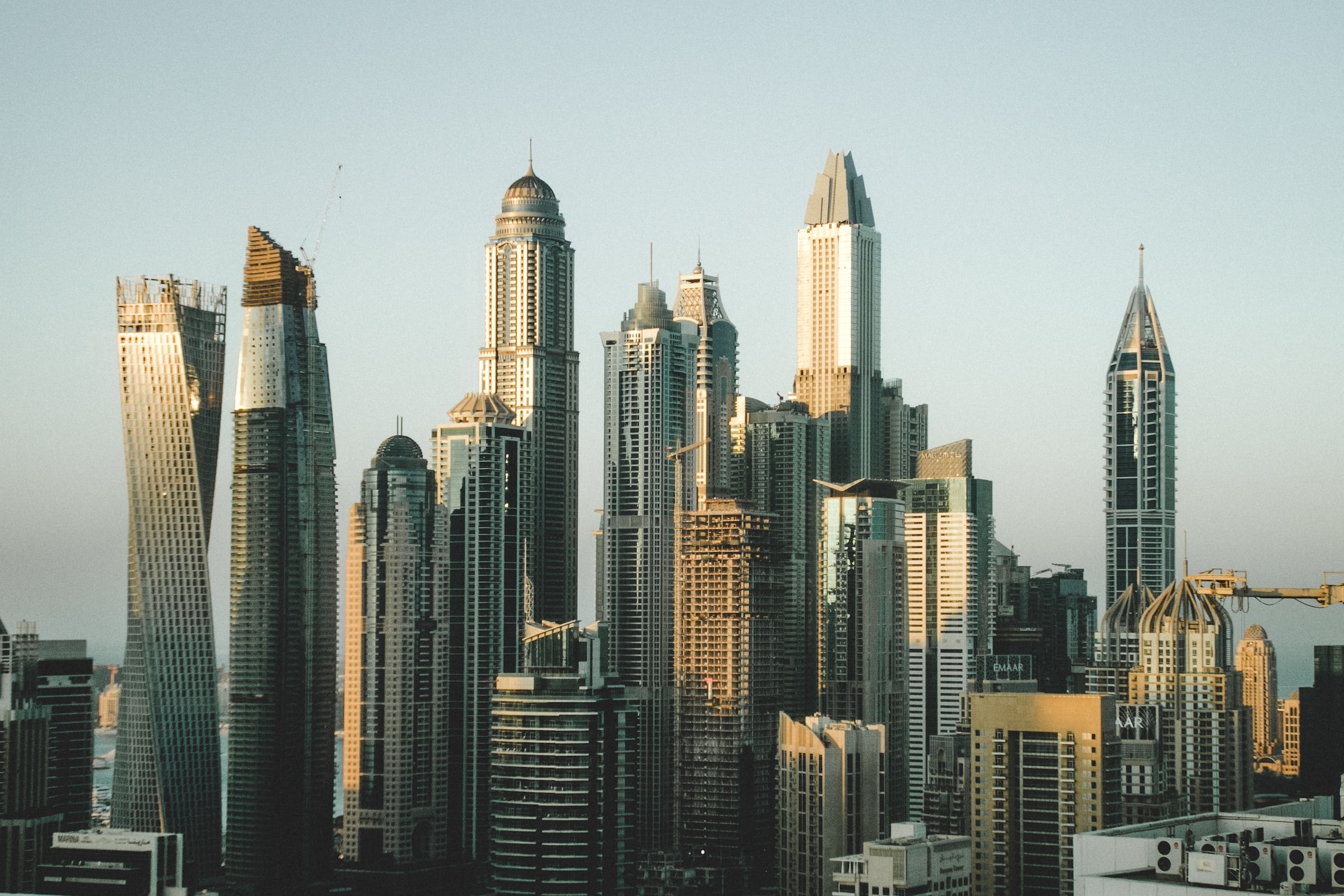Even though what we objectively require from a restaurant is simple – a seat, some food and a drink – the truth of it is that everyone has their favorite place, because most of the time, it’s the attention to details both on and off the plate that matter the most.
When visiting a new place, or looking for a novel culinary experience, diners often rely on the Michelin Guide for an insight into where to find the world’s fine-dining experiences.
Since 2020, Michelin have also begun listing not only the restaurants they deem the best on the planet, but also the best for the planet, with green stars as well as their coveted red ones.
Michelin have started awarding a Green Star for sustainability to chefs and restaurateurs they deem as “role-models” of the culinary world for their efforts in green gastronomy.
What is the Michelin Green Star?
The Michelin Green Star is awarded to climate committed chefs that have “eco-responsibility at their core.”
Through focused green initiatives, the awardees aim to inspire, and are actively working to accelerate a green transformation of the culinary sector. These pioneers are not only conscious of the impact their restaurant is having on the environment, but also the weight of their influence on the green perspectives of society.
“[The Green Star] highlights to restaurant-goers those places that distinguish themselves on account of their bold, sincere and highly committed approach to sustainable gastronomy,” says Michelin, awarded to “true role models, designing an alternative vision of gastronomy that is not only delicious but also virtuous.”
Michelin wants to encourage dialogue amongst those working within the restaurant industry, but also “cultivate awareness across the board and accelerate action.”
Chefs often have a very intimate and thoughtful relationship with their creations, to them, it’s more than just food, it’s an expression of their perspective and manifesto, and they want their guests to look at the world from their angle in the moment of tasting.
Placing establishments and chefs who are prioritizing messages of eco-responsibility, sustainability, and green practices in their edible impressions, is extremely valuable.
What is the Michelin Green Star and How Do You Earn One?
The new sustainability award for restaurants in England, Scotland, Wales & Ireland: https://t.co/f1MuwlLAqO pic.twitter.com/cd8Gi6WxZT— The MICHELIN Guide (@MichelinGuideUK) May 7, 2021
The Green Gastronomy formula
When deciding which restaurants to award Green Stars to, Michelin say they have no criteria or precise formula, but that eco-responsibility, creativity, and a strong commitment to sustainable gastronomy must be at their core.
They take the following into consideration:
- The origin and seasonality of the produce used
- Balance in menu composition
- Responsible waste and resource management
- Energy self-sufficiency
- Contribution to the local circular economy
- Effort to draw awareness to sustainable approaches
Michelin inspectors of course must also experience the restaurant for themselves, eating the food and feeling the vibe, on top of which they conduct in-depth research into the establishment’s eco-friendly practices and manifesto
“The Green Star is a distinction intended to guide restaurant-goers towards establishments where our inspectors have been impressed by the dining experience in terms of the commitment to sustainability fostered,” they state.
Related Articles: Dave Chang’s “The Next Thing You Eat” and the Need for Meat | The 8 Best TikTok Accounts About Foraging | Oxford Researchers Develop New Tool for Estimating Food Products’ Environmental Impact | What Being a Conscious Consumer Really Looks Like
There are currently 391 restaurants worldwide that have earned a Michelin Green Star, so book yourself a table on a Saturday evening at one of these restaurants, and you’ll be sure to find like-minded inquisitors who are also excited about green gastronomy.
Global Green Star guide
Prioritizing sustainability over status at their core, their success is built from a solid foundation of real food, real people, and a green attitude.
They understand the importance of balance between indulgence and conscience, and each reveal sustainable values through their menu curation.
For example, some of Michelin’s Green Star restaurants include…
The French Laundry – Washington, US
Based in Washington in the US, not only does The French Laundry – owned and run by the famed chef Thomas Keller – have a Michelin green star, it also possesses three red ones too.
Some hail it “the greatest cooking space in America,” as classic French cooking techniques are paired with fresh ingredients grown by their very own culinary gardener.
The restaurant’s commitment to sustainability goes further than sentiment, as the kitchen and dining area is powered by a solar and battery system, and the wooden structures inside and outside the building have been weatherproofed using the Japanese “shou sugi ban” preservation method – eliminating the need for toxic weatherproofing.
Here you can try “Carnaroli Risotto Biologico” which features white truffles from Alba, or you can opt for the vegetable tasting menu, featuring seasonal delights from their kitchen’s garden.
Shima Aji Sashimi with Garden Radishes, Cucamelons and Sesame Dressing #shimaaji pic.twitter.com/sQyiGuaDPt
— The French Laundry (@_TFL_) July 24, 2019
Mater Terrae – Rome, Italy
Situated on the rooftop terrace of Bio Hotel Raphael near the cobbled Via dei Coronari in the historic center of Rome, Mater Terrae is built from eco-sustainable materials and focuses on contemporary vegetarian and organic cuisine.
Guests are able to enjoy a menu of locally sourced, natural, seasonal products and “unique recipes based on art, creativity and innovation.”
They aim to inspire with unique vegetarian recipes that are interesting, innovative and sustainable, whilst offering diners the unique opportunity to enjoy looking out over the Roman streets and rooftops with their meal.
Their menu boasts a spectrum of varieties of home-baked focaccia, as well as poetically named botanical dishes such as their vegetable and mushroom terrine called “Walk in the Woods.”
View this post on Instagram
Where The Light Gets In – Stockport, UK
The modern-British menu at this loft-style restaurant; Where The Light Gets In, changes daily – “the surprise menu is formed from whatever they have foraged that day,” sourcing home-grown produce from their own farm.
Positioned on the top floor of a Victorian coffee warehouse, a rustic and communal atmosphere is created as the kitchen is open-plan and merges with a part of the dining room.
Aside from the food, they also have an extensive list of natural wine pairings, placing emphasis on their commitment to heritage and chemical-free produce, practices and philosophy.
We needed ladders for today's harvest! pic.twitter.com/uYWGWkJAS2
— WhereTheLightGetsIn (@wtlgi) August 30, 2018
Arpège – Paris, France
“The best cookbook ever written was by Mother Nature herself,” says Arpège head chef Alain Passard.
This Parisian restaurant’s menu has a 100% vegetable-based concept, and Michelin has awarded Passard a Green Star, three red Michelin Stars, and hails the restaurant’s “exceptional cuisine,” which is “worth a special journey!”
Passard’s kitchen has three in-house gardens which he regularly visits for inspiration on how he can turn an overlooked vegetable side-dish into the star of the show.
“The seasons give the tempo to our cuisine,” says Passard, who Michelin says aims to elevate the ordinary ingredient, serving dishes such as “Colours, flavors and scents of the gardens.”
View this post on Instagram
La Bicicleta – Cantabria, Spain
The core values of La Bicicleta are nature, a healthy lifestyle and sustainability.
On entering this Cantabrian village restaurant, you are met with an Alfred Einstein quote above the doorway which reads: “Life is like riding a bicycle. To keep your balance, you need to keep moving,” alluding to the head chef Eduardo Quintana’s commitment to innovation and progress.
Environmental impact and self-sufficiency are paramount within all of their culinary practices, from recycling, conscious waste management, and making their own compost, to keeping their own gardens and greenhouse full of vegetables, fruit, herbs, pulses and wildflowers.
Their “zero-miles” concept means that 100% of the ingredients that make up the menu, including dishes such as “Kombucha and cucumber flower,” are grown and picked onsite.
The restaurant is also now looking to build a small livestock farm to produce more of their menu’s ingredients on site.
View this post on Instagram
Rest. – Oslo, Norway
In Norway, home of the pioneering “New Nordic Food Manifesto” which promotes purity, freshness, seasonality and simplicity, you can find a restaurant founded by three friends who care about the world as much as they do their menu.
“Rest.” promises conscious yet creative cooking of seasonal “imperfect” ingredients that would otherwise have been discarded. The creations from their “waste-not-want-not” set menu might just surprise you and will certainly keep your climate conscience at bay.
“We turn food waste into a fine dining experience by rejecting modern consumerism. We marvel at the abundance of brilliant ingredients that never reach a shop or plate and believe that no usable ingredient should be left behind,” says one of the chef trio, Jimmy Øien.
View this post on Instagram
DILL – Reykjavík, Iceland
It’s no surprise that the world’s most geothermically active country features within Michelin’s guide of Green Star restaurants. In a volcanic country that sometimes uses geysers to cook bread, by focusing on traditional Icelandic culinary methods and dishes, the chefs at “Dill” have been recognised for their commitment to sustainability.
The menu navigates pairings of fresh fish, meats and vegetables from local producers, with home-made pickles and preserves made from the previous season’s foraging.
Next time you’re in Reykjavík, and you’re looking for somewhere to warm up, the dimly-lit rustic atmosphere of this traditional restaurant with an eye on the future should be top of your list.
We try to use what surrounds us and embrace our old traditions in our own way. pic.twitter.com/tFc5omaMTY
— DILL Restaurant (@DILLrestaurant) March 2, 2018
Amber – Hong Kong
The French Contemporary menu at Amber caters to many food moods, allergies, and intolerances, as multiple iterations of the two Michelin star menu are available as dairy-free, gluten-free, vegetarian, reduced salt, and reduced sugar alternatives.
Located in the iconic Landmark Mandarin Oriental Hotel in Hong Kong, the restaurant uniquely balances luxury with sustainability. With a focus on giving local organic ingredients a “second life” with his circular dishes, Dutch chef Richard Ekkebus only uses sustainably harvested seafood, Fair Trade produce, and plant-based plastic alternatives in his kitchen.
They have also installed an anaerobic digester system to manage and process food waste.
This month, join us to take actions to protect our oceans! In celebration of World Oceans Day on 8 June, Amber, SOMM and MO Bar is proud to join the call of Hong Kong Sustainable Seafood Coalition (HKSSC) to provide sustainable and responsibly sourced seafood menus from 6-12 Jun. pic.twitter.com/P1Xz6eoRAC
— The Landmark MO (@MO_LANDMARKHK) June 2, 2022
A Flower Blossom on the Rice – Seoul, South Korea
In an effort to raise awareness of sustainable practices and eco-friendly ingredients in Seoul, A Flower Blossom on the Rice is 100% organic-certified, and exclusively collaborates with local farmers who have been awarded official certificates for their commitment to organic produce and processing, eco-friendly practice, animal welfare, non-pesticide status, and biodynamic nature.
95% of the menu comes from these local farmers, and the ingredients are transformed into traditional home-cooked dishes that provide a window into South Korean cuisine, away from the tourist hustle and bustle of the city.
The signature dish will not disappoint you, as it’s their very own in-house version of Bibimbap, which visually resembles a gift. Michelin says the rice parcel is “tied with a seaweed ribbon and presented with a single flower on top.”
Looking for #vegan & #vegetarian Korean food? Visit A Flower Blossom On The Rice in Insadong!🌸🍚🌱
It's a Michelin Star restaurant, so definitely worth trying😋https://t.co/dOJhb8wowH#seoul #koreanfood
— Creatrip: Korea Your Way (@creatrip) October 1, 2021
NARISAWA – Tokyo, Japan
With a menu that feels much like a set of rituals, owner and head chef Yoshihiro Narisawa intends his diners to experience co-existing with the forest.
After beginning the meal with a time-honored cup of sake, guests are taken on a journey through the landscape of Japan with Narisawa’s dishes, distilling the essence of Japanese culture and nature throughout.
His passion and commitment to environmental sustainability and conservation shines through in both his work and life, as every year he visits depopulated Japanese mountain villages to plant trees and preserve the natural environment there, as he believes “it is the duty of a chef to not only prepare food, but to preserve the wilderness ecosystem.”
京都白子筍
土の中に埋まっている状態で収穫される、今この時期しか味わえない大枝塚原産の白子筍。
NARISAWAでは日本ならではの食材をふんだんに使い、ご家庭でも季節を感じられる料理をご用意しております。下記のリンクからご注文いただけます。https://t.co/MeN8AVpWcN#NARISAWA #南青山 pic.twitter.com/SYMDSX00jE
— NARISAWA (@NARISAWA_Japan) May 6, 2020
100/200 Kitchen – Hamburg, Germany
The seasons determine the menu at this industrial-chic restaurant set high in the loft of an old factory in Hamburg, and every dish resembles the time of year within which it is prepared and enjoyed – Michelin say that “respect for the produce is the motto here.”
As is alluded to in their name, the team at “100/200 Kitchen” only cook their ingredients at either 100°C or 200°C, keeping the “climate, nature, the tides, the season and the homeland” paramount in their menu design and kitchen practices.
The head chef, Thomas Imbusch, and his team truly believe in conscious indulgence as they remark that “we want pleasure without remorse for our guests and ourselves.”
Pleasure can most certainly be found in their carefully curated menu, but you’ll have to wait and see for yourselves as they keep their seasonal dishes a surprise.
View this post on Instagram
— —
Correction: This article has been updated since publication to shorten the subtitle; amend the introductory sections to clarify how and why green stars are awarded; and make some minor corrections to sections on Arpege and La Bicicleta.
Editor’s Note: The opinions expressed here by the authors are their own, not those of Impakter.com — In the Featured Photo: Grilled asparagus at Noma Restaurant, Copenhagen. Featured Photo Credit: cyclonebill/Flickr














